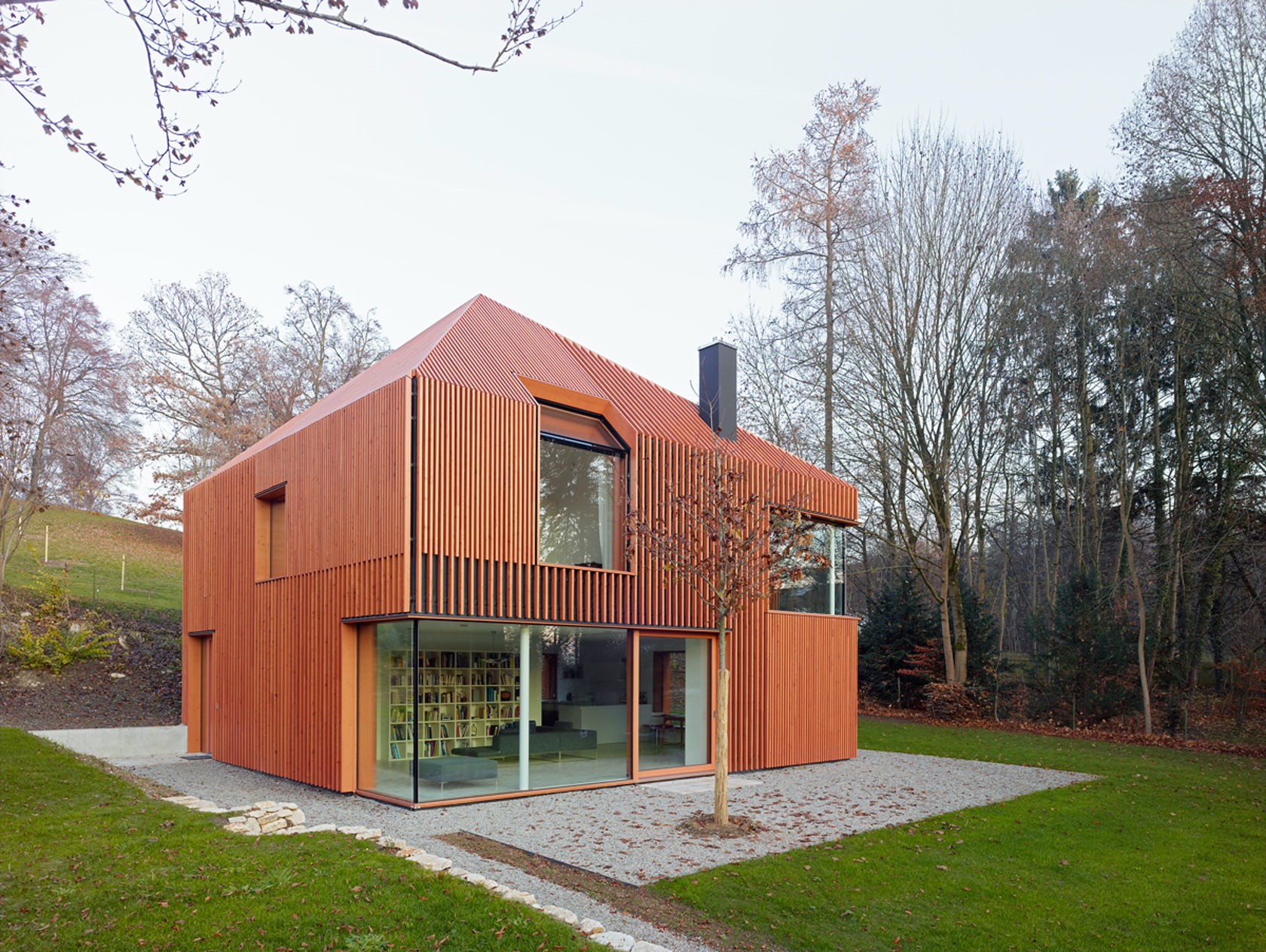#12181. Slatted Wooden Façade: Monolithic Form and Rhythm in Contemporary Country House
Before us is an impressive example of modern residential architecture, embodying minimalist aesthetics with a pronounced textural component. The house is a compact two-story volume with clean geometric lines and a characteristic gabled roof, referencing the archetypal form of traditional housing while interpreting it in a contemporary manner.
The façade is completely clad in vertical wooden slats of a warm reddish-brown hue, creating a rhythmic texture and giving the building a distinctive tactility. This technique of vertical rhythm visually elongates the building upward, lending it elegance and lightness despite its compact form. It's particularly interesting how the slats flow from the façade onto the roof, creating a unified shell and enhancing the cohesiveness of the architectural image.
The glass elements of the ground floor façade create a contrast with the textured surface of the wooden slats, providing a visual connection between the interior space and the surrounding landscape. Through the transparent panels, one can see the interior with bookshelves, emphasizing the intellectual atmosphere of the dwelling. The second floor has more restrained glazing, creating an interesting balance of openness and privacy.
The building is organically integrated into its natural surroundings, establishing a dialogue with the trees around it. The minimalist landscaping with simple gravel edging and a neat lawn emphasizes the architectural merits of the structure without distracting attention to secondary details.
For private residential construction, this technique of cladding with wooden slats can be an excellent way to give a façade expressiveness and a contemporary look. This method allows experimentation with rhythm, spacing between slats, their width, and the shade of wood. It's important to properly treat the material for protection against atmospheric influences to preserve its aesthetic qualities for years to come.
